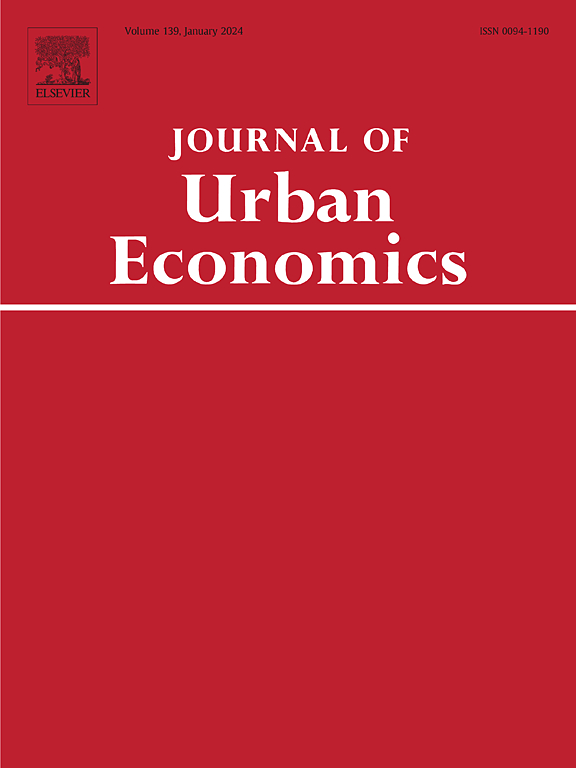有毒金属的不公正?出生时的社会经济地位与接触空气污染的情况
IF 4.8
1区 经济学
Q1 ECONOMICS
引用次数: 0
摘要
我们将有关社会经济地位(SES)的行政数据与有关居住地点、当地污染水平、工业设施以及土地覆盖信息的高分辨率数据相结合,研究了瑞典新生儿接触空气中有毒金属(砷、铅和汞)的情况是否在人群中分布不均。我们发现,新生儿社会经济地位的空间分布与有毒金属在全国和最大城市的分布相关性很弱,这表明在这一维度上的分类可以忽略不计。高社会经济地位的儿童居住在交通和工业活动较多的城市地区,他们接触有毒金属的比例更高。由此我们可以得出结论,在瑞典,空气中的砷、铅和汞暴露方面的环境不公正并不是一个主要问题。本文章由计算机程序翻译,如有差异,请以英文原文为准。
Toxic Metal Injustice? Socioeconomic status at birth and exposure to airborne pollution
We combine administrative data on socioeconomic status (SES) with high-resolution data on residential locations, local pollution levels, industrial facilities, as well as land cover information to investigate whether exposure to airborne toxic metals (arsenic, lead, and mercury) is unequally distributed within the population of newborn children in Sweden. We find that the spatial distribution of SES among newborns weakly correlates with the distribution of toxic metals at the national level and in the largest cities, indicating negligible sorting in this dimension. If anything, high SES children are disproportionately more exposed, residing in urban areas with higher levels of traffic and industrial activities. This leads us to conclude that environmental injustice regarding airborne arsenic, lead, and mercury exposure is not a major concern in Sweden.
求助全文
通过发布文献求助,成功后即可免费获取论文全文。
去求助
来源期刊

Journal of Urban Economics
Multiple-
CiteScore
10.60
自引率
4.80%
发文量
64
期刊介绍:
The Journal of Urban Economics provides a focal point for the publication of research papers in the rapidly expanding field of urban economics. It publishes papers of great scholarly merit on a wide range of topics and employing a wide range of approaches to urban economics. The Journal welcomes papers that are theoretical or empirical, positive or normative. Although the Journal is not intended to be multidisciplinary, papers by noneconomists are welcome if they are of interest to economists. Brief Notes are also published if they lie within the purview of the Journal and if they contain new information, comment on published work, or new theoretical suggestions.
 求助内容:
求助内容: 应助结果提醒方式:
应助结果提醒方式:


